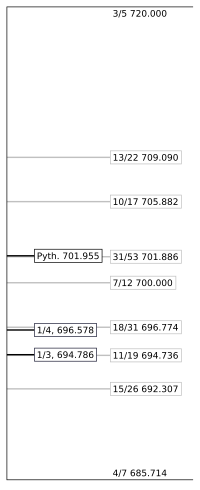19 equal temperament

Imagine you have a piano with 100 keys. Each key represents a different musical note, like when you press one of the keys, it makes a specific sound. Now, let's say you want to divide the area between two of these keys into smaller parts so that you can play more notes and make more interesting music.
In normal pianos, this division is done using a system called equal temperament. In equal temperament, the area between two keys is divided into 12 equal parts. However, in the case of 19 equal temperament, instead of dividing into 12 parts, we divide it into 19 equal parts.
By dividing into 19 equal parts, we can play many more notes that were not possible in the regular 12-part division. This is because when we divide into 19 parts, the difference between each note becomes smaller, allowing us to play notes that are in between the regular notes.
Now, you might wonder why we would want to play these in-between notes. Well, it helps us to play music in different scales and keys. It also allows us to play more complex and varied melodies. For example, if we want to play a song with notes that do not fit nicely into the regular 12-part division, using 19 equal temperament can help us play those notes accurately.
So, to summarize, 19 equal temperament is a way of dividing the area between two piano keys into 19 equal parts. This helps us play more notes, play in different scales and keys, and create more interesting and diverse music.
In normal pianos, this division is done using a system called equal temperament. In equal temperament, the area between two keys is divided into 12 equal parts. However, in the case of 19 equal temperament, instead of dividing into 12 parts, we divide it into 19 equal parts.
By dividing into 19 equal parts, we can play many more notes that were not possible in the regular 12-part division. This is because when we divide into 19 parts, the difference between each note becomes smaller, allowing us to play notes that are in between the regular notes.
Now, you might wonder why we would want to play these in-between notes. Well, it helps us to play music in different scales and keys. It also allows us to play more complex and varied melodies. For example, if we want to play a song with notes that do not fit nicely into the regular 12-part division, using 19 equal temperament can help us play those notes accurately.
So, to summarize, 19 equal temperament is a way of dividing the area between two piano keys into 19 equal parts. This helps us play more notes, play in different scales and keys, and create more interesting and diverse music.
Related topics others have asked about:
